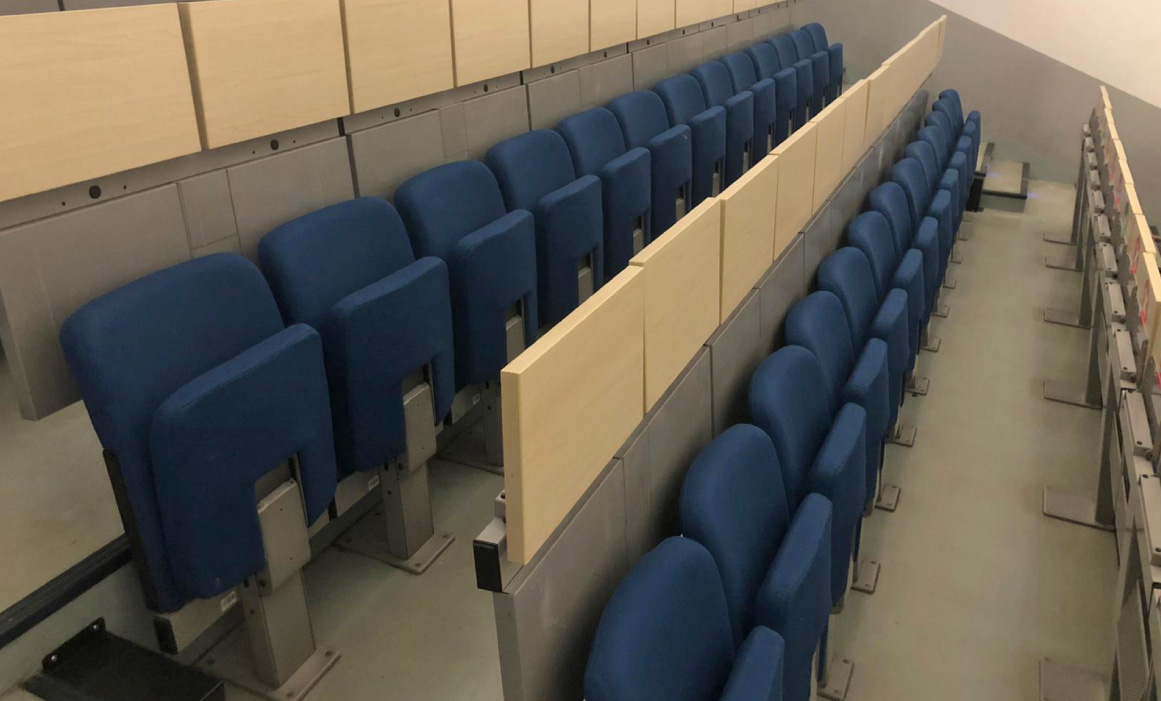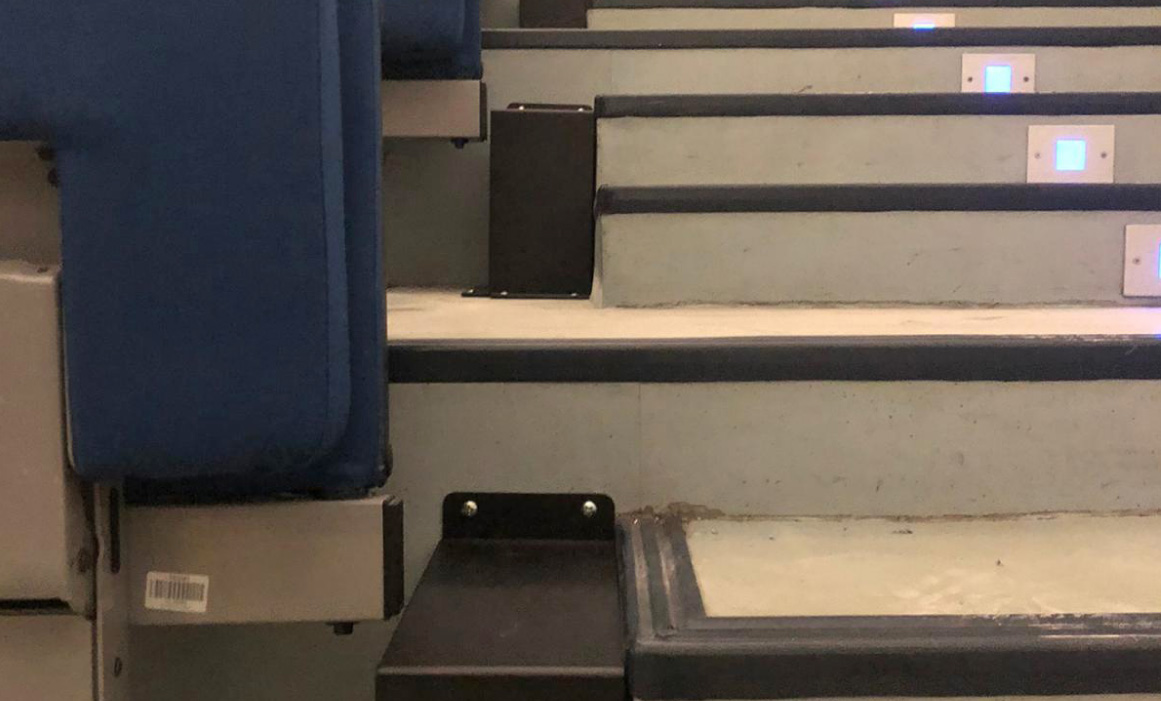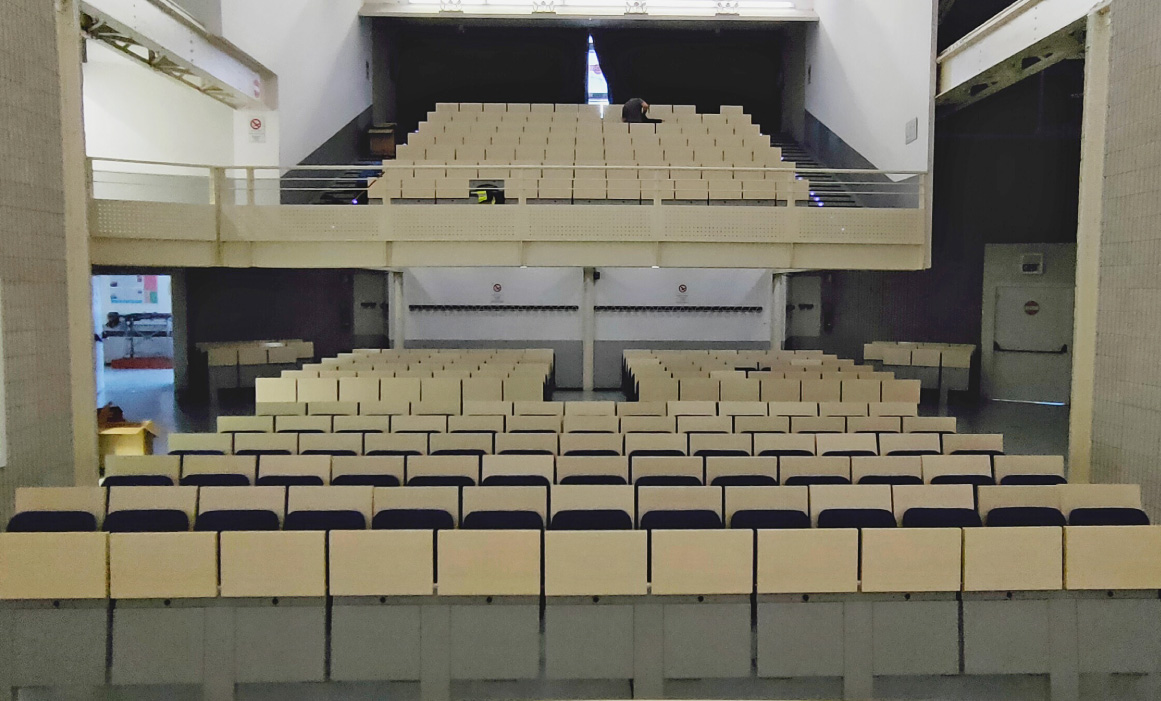Renovation of the Faculty of Engineering’s Main Auditorium at the University of Bergamo in Dalmine
During a meeting with the main board of the Bergamo University, they showed us the Dalmine’s Lecture Theatre, with the aim to make it functional again, without having to buy new furniture and scrap the old ones.
During the technical inspection, besides understanding that the renovation of the existing seats and tables was perfectly achievable by Audia, we also planned to make safety some passage areas and emergency exits. In add we considered together how to wire the tables to allow students to have electrical inlets for computers.
After our offer, the University chose to wire the tables on its own and instead we had to provide for the refurbishment of the armchairs padding, the removal of its broken shells, the renovation of the tables caps’ dampers and revised the mechanisms of the armchairs. In add, we created custom-made shaped metal protections to fill the space between the step and the seat to avoid possible injuries due step level differences.
The operation lasted in total 3 weeks, minimizing the duration of the work. In the first phase, the upholstered seats were disassembled and brought to our factory. Our upholsterers, after a careful analysis of the internal padding of the seats and backrests, decided not to remove the upholstery as it would have compromised the physical composition of the internal padding, proceeding with the insertion of new padding material, filling entirely where it was completely missing and identifying a new upholstery that would resume the characteristics of the original one and meet the standards related to fire reaction.
When the new seats were ready, we have returned to the classroom, checked out all the mechanisms, mounted the new seats, restored the shells where necessary, and mounted the new dampers and the spacers of the steps in painted steel.
At the end, the interventions identified in synergy with the Client made it possible to preserve the visual appearance and the original functions of both the seats and the entire classroom. The restructuring method also allowed savings over 80% for the University compared to the construction of a new room. Furthermore, from an environmental point of view, it avoided the production of useless and harmful waste and has eliminated disposal costs.
Reuse and repair. Circular economy, this will be the principle that will guide us in our future!








Recent Comments